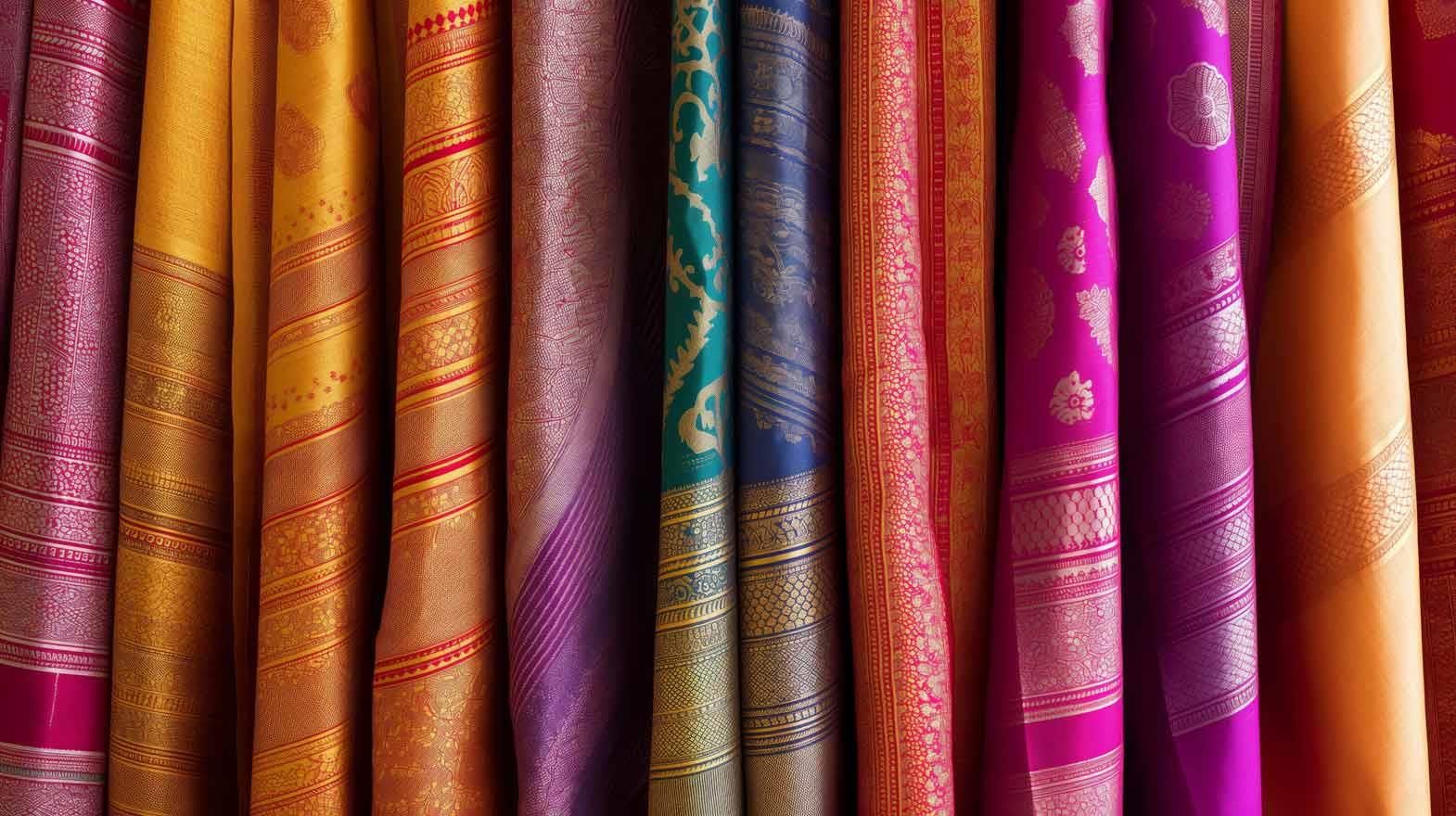A ‘saree’ (also sari) has been the identity of an Indian woman since time immemorial. As a traditional dress, it is a distinctive symbol of Indian culture, worn by generations of women. This draped and pleated garment exists as a classic and lends itself as an inspiration to fashion designers globally. It has attracted much scholarly attention and discourse from psychological and social viewpoints. However, a need was felt for more consumer study based on the saree, which on the one hand, is a daily dress for the masses, and on the other hand, a fashion showstopper. While some women consider it a ceremonial essential, others consider it an heirloom of memories. Thus, a study was conducted to examine the perceived value of the saree by urban Indian women.
History of Saree
Saree – a traditional dress, is a distinctive symbol of culture and tradition in India. It is a distinguishing mark of Indian women’s identity and has stood the testimony of time and retained its essence as traditional attire; at the same time, with subtle modifications has become a part of contemporary fashion. The word ‘saree’ originates from the Sanskrit word ‘sati’, which means strip of cloth dress. It is a five to nine -yard-long fabric, loosely knotted at the waist, folded and pleated. However, depending on the various Indian locations, the saree can be draped in multiple ways.
Tracing the historical evolution of the saree, given the warm Indian climate, Indian women started draping themselves in light clothing to cover the essential body parts and left the rest of their bodies uncovered. The invasion of the Mughals introduced stitched clothing and British rule introduced European dresses and skirts in India. Thus, the upper-class Indian women retained the distinctive saree but added blouses and petticoats to this unstitched yardage. With the emergence of the National Movement, the Indian saree became the ‘Indian National Identity’. Post-Independence, the saree represented ‘authentic’ Indian clothing and its aesthetic ‘traditions’. However, many young Indian women also adopted European styles such as skirts, blouses, trousers and denim jeans for a so-called ‘progressive’ image. Many switched to wearing salwar kameez because of its functional usefulness and inexpensive upkeep, and many wore saree made of synthetic material.
Presently the saree has evolved to adopt an experimental new meaning wherein it represents elegance, exclusivity, and Indian tradition. It is considered sexy and classy at the same time.
Scholars state that the saree is a universal attire. A grandmother, a mother and a granddaughter can drape the same saree over generations, and it easily adapts as a garment to different occasions. A dress can signify various social and political ideas – hierarchy, power, authority, status, respect etc. However, perhaps nobody is independent in choosing their clothing which may be restricted by 1) economic condition of the society, 2) purchasing power of the people, 3) control over personal choices, 4) availability of other alternative clothing styles, 5) conspicuous consumption, and 6) ability to experience satisfaction from one’s choice.
The saree is one attire which, though perceived worldwide as traditional attire of Indian women, has changed meanings for the Indian woman herself. Sometimes she perceives it as conservative attire, sometimes sensuous, to gain respect, and occasionally as a fashion statement. Thus, over the years, the saree has acquired many meanings.
A study was conducted to examine the perceived value of the saree by urban Indian women by means of an online questionnaire based on value statements. This was circulated to more than 250 urban Indian women in metro cities.
The statements were based on five values – functional, emotional, financial, epistemic and social, on Indian women’s choice of wearing a saree. The functional ease of a stitched garment vis a vis a draped saree is a significant consideration for the modern Indian woman. Therefore, statements about ease of movement, making of an ensemble of a saree and time spent draping a saree were identified as aspects related to a saree’s functionality and utility that could influence a woman’s choice. Price-related statements like ‘value for money’ and ‘investment’ were also added as functional statements.
The younger women feel that the saree is conservative and restricts individuality and social freedom, limiting its wear to special occasions. At the same time, it is a national attire worn by most Indian women. Thus, according to the social stature of the saree, statements about cultural representation and respect gained by wearing the saree were framed.
Sarees are associated with the wedding trousseau of the Hindu community, and it is a traditional gift from the older women in the family. It has also been a connoisseur’s pleasure and wearer’s delight, evoking strong emotions and attachments. Accordingly, emotional statements were framed to find if the saree wearers considered special memories related to a saree, treasuring a saree, or gifting of sarees as important.
The epistemic values are acquired from a product in terms of novelty, satisfy a desire or provide novelty. Thus, statements for epistemic meanings were framed for desirability, new drape styles, experimentation and fashion.
One open-ended question was included in the questionnaire to probe how the individual wearer perceives the saree and find the in-depth social reality.
Results and Interpretation
From the 270 responses, an overwhelming response was received in the age group 41-55 years, with most respondents being professional. While most answers categorised the saree as a formal wear, a unanimous reaction classified the saree as a garment of traditional wear and less than one-fifth considered it daily wear. Half of the women respondents had about 50 sarees in their wardrobe, and more than 16 per cent had more than 100 sarees.
The questionnaire statements were analysed, regrouped into new factors, and were defined, keeping saree as the focal point. Ease of movement, time spent in draping and making the complete ensemble of the saree were identified as functional aspects related to the functional or physical performance expected from the saree. In the data, some women expressed the practical difficulty of wearing a saree – “I would love to wear it more and more, but the inability to wear it well by myself inhibits me.”
Cost and investment-related statements’ perceived value also converged as distinct financial factors. The statements related to respect in society, one’s reflection of personality (to the community), and cultural representation emerged together as socio-cultural factors matching with the original perceived value model. Qualitative statements like “Saree is... one’s culture, tradition, Indian”, “It defines me and my culture”, “Represents Indian culture beautifully…”; “Just wearing a saree gives us a recognition of being an Indian” lent credibility to this factor.
Memories evoked by some saree(s), regarding them as treasures, sarees bequeathed as gifts (my mother, grandmother, mother-in-law), and a wish to pass them on as gifts to others – these alluded to the emotional values associated with sarees and were in tandem with the original model. Thus, these statements confirmed emotional values for a saree. Descriptions from the respondents included statements like “Saree for me is happiness… it brings back so many memories for me”; “Meaning of a saree is my memories of my grandmother and mother traditionally wearing a saree after the morning bath”; “Saree is a memory box. Each saree has its own story, which is very near to your heart.” “The pallu of a simple hand-washed cotton saree has the motherly warmth, protection, a guiding hand.”
A unique set of responses concerning fashion and trends emerged as a component in the perception of sarees. Qualitative statements revealed many responses for saree as a fashionable wear. According to one response – “Saree is...style icon of the present...a fashion statement for the future infinite”, another reads “…now it’s a fashion…woman looks beautiful in saree no doubt.”
Conclusion and Implications
Saree is a garment of the past with limitless possibilities for the future. The functional, financial, emotional, social and fashion-oriented factors emerged from this study, giving a new framework for evaluating consumer perception regarding saree. This systematic research highlights the many nuanced aspects that determine actual behaviour towards the choice of saree. The research brings forth important insights about values associated with the saree amongst urban consumers that can be utilised by product managers, designers and marketing professionals to plan, design and positions the saree for the modern woman.
This article is a part of an academic paper with complete references that was presented at NIFT conference 2023 at Gandhinagar, Gujarat.









Comments